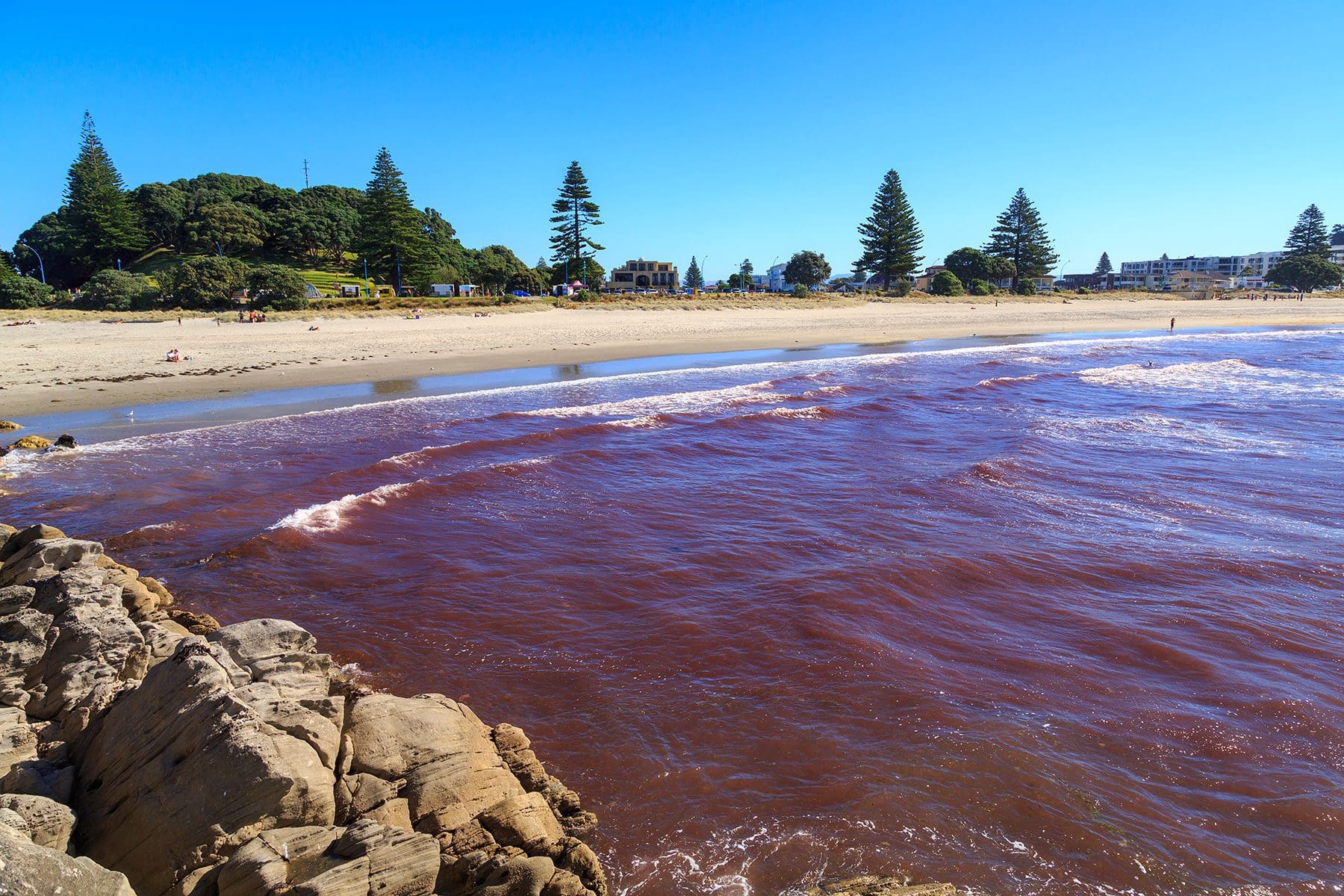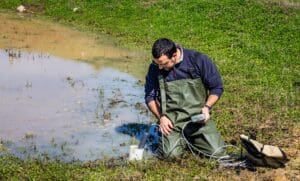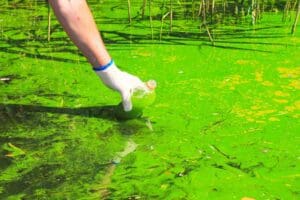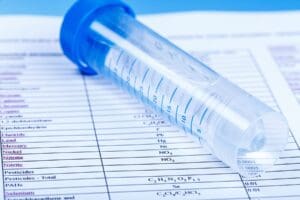Harmful Algae Blooms are Rising: Could a Water Testing LIMS Help Your Lab Cope?
 “Life finds a way.” Okay, maybe Ian Malcolm didn’t have algae in mind when he uttered those infamous words. But with harmful algal blooms increasing worldwide every year, the microscopic organisms are making as dramatic an impact as a tyrannosaurus rex (or indo-raptor, for that matter). Humans are directly in the crosshairs of these toxic blooms. And that means stepping up the game in your lab. If your water testing LIMS isn’t prepped for the coming onslaught, it might be time for an upgrade.
“Life finds a way.” Okay, maybe Ian Malcolm didn’t have algae in mind when he uttered those infamous words. But with harmful algal blooms increasing worldwide every year, the microscopic organisms are making as dramatic an impact as a tyrannosaurus rex (or indo-raptor, for that matter). Humans are directly in the crosshairs of these toxic blooms. And that means stepping up the game in your lab. If your water testing LIMS isn’t prepped for the coming onslaught, it might be time for an upgrade.
Anti-Water World: The Rise of Harmful Algae Blooms
The average citizen understands the need to stock up on water supplies ahead of hurricanes and winter storms. Following such acts of nature, people even comprehend the need to boil tap water before drinking or bathing to prevent contact with dangerous pathogens. But how do you inform a city they can’t drink OR touch a single drop of water? And add a warning that throwing a pot on the stove will increase the danger?
In August 2014, a harmful algae bloom of Microcystis aeruginosa (everyone’s favorite cyanobacteria) crippled Toledo, Ohio, with this quandary. Water testing detected rampant levels of the species, enforcing a water ban that lasted three days. People were banned from bathing, showering, washing their hands – to say nothing of drinking water from their sinks or refrigeration lines.
The bloom wasn’t new – Lake Erie’s been on the radar of water testing labs since 2002 – but it was the first time levels forced an alarm. The increased number of commercial farming operations for corn and soybeans surrounding the Great Lake has meant more phosphorous and nitrogen. And everyone in the water business knows what those elements translate to: Super algae growth formula.
Throw in warmer average temperatures, and Lake Erie’s ground zero for harmful algae blooms. In 2019, water testing labs watched a bloom of over 620 miles (998km) sweep pea soup scum onto beaches. From Toledo (does anyone there touch a tap anymore?) to Sandusky, teams hit the lake to obtain samples throughout the summer months.
And that’s where a convenient water testing LIMS comes in handy. With streamlined sample collections – such as the SICKIT (Sample Information Collection Kits) – techs can venture to any point on a sludge-strewn lake and communicate directly with the lab.
 Picture it:
Picture it:
- A WiFi tablet (because NO ONE wants to read handwritten notes by someone wearing protective gloves)
- Scanners with built-in barcode printers to keep samples organized
- Reports designed FOR your lab, so no one’s balancing a rowboat and scrolling through unneeded data entries
Lake Erie blooms are scored on a scale of 1-10. Rainfall appears to play a significant influence on the scores, as evidenced by the fluctuations over the years since 2015’s whopping score of 10:
| Year | HAB Score |
|---|---|
| 2015 | 10 |
| 2016 | 3.5 |
| 2017 | 8 |
| 2018 | 4 |
| 2019 | 7.5 |
| 2020 | 3 |
| 2021 | 6 |
Labs compile their readings, generating reports filed with NOAA, which publishes weekly algae forecasts throughout the summer. And 2022? Well, the trend’s swinging back in the UP direction. Is your lab prepared to handle the oncoming needs for this crucial water testing?
Water Testing the Fishing Industry
Unfortunately, the inconvenience of racing your neighbors to the grocery store for a case of water isn’t the only fallout of harmful algae blooms. As excess nutrients sweep off the coast, red tides become more frequent. Water testing also confirms the presence of organisms such as Alexandrium catenella. When labs detect the presence of this poisonous species, fisheries get shut down, and local economies struggle with the fallout. (Though, arguably, it’s better than potential poisoning)
South Africa lost 220 tons (200 tonnes) of rock lobster in 2015 to a bloom of multiple dinoflagellates. (Who ISN’T crying over that much lost lobster?) And the same eutrophication is responsible for dead zones throughout the Baltic Sea. Labs in the region obtain routine samples of the nutrient loads flowing from Finland’s rivers. Agricultural run-off and increasing water temperatures are blamed for the declining fishing industry.
That’s where a cloud-based water testing LIMS – capable of integrating with reference labs around the globe – can expand available knowledge. Even better, the best LIMS connect and expand with additional third-party systems.
The growing economic impact of algae blooms prompted the development of the Harmful Algae Event Database (HAEDAT) to track global blooms. And with nine events of ciguatera toxin in French Polynesia as of May, the 2022 record is off to a roaring start.
Harmful Algae Blooms and Animals
The definition of a harmful algae bloom is the overgrowth of a single dominant species. Power-mad individual species orchestrate a hostile takeover of a local ecosystem, leaving government agencies, water testing labs, and even wildlife rescue groups scratching their heads.
From 2017 to 2019, a red tide in Florida wreaked havoc on populations of dolphins, sea turtles, and manatees. NOAA had no choice but to declare an unusual mortality event (you KNOW they don’t break that label out every day). The harmful algae bloom – emphasis on HARMFUL – stretched 150 by 20 miles (241 by 32km) at its peak. People driving past the beach experienced “red tide sickness” when they breathed the aerosolized toxins: sore throats, watering eyes, and coughing. Rescue volunteers and water testing employees at ground zero donned snorkels, rebreathers, goggles, and masks to endure the miasma.
 Of course, that’s “nothing” compared to getting attacked by hundreds of furious seagulls. (Alfred Hitchcock didn’t dream up that scenario) In 1961, the event happened in Capitola, California. No one understood the why behind the spontaneous frenzy – until 239 sea lions washed ashore in 2015. Necropsy revealed Pseduo-nitzschia australis. Innocent alone, the algae had recently bloomed. And consumed in the thousands by fish – and then sea lions – it produced sufficient amounts of the neurotoxin domoic acid, yielding fatal consequences. Depending on the amount of domoic acid one consumes, symptoms can also include “crazed” behaviors. Including flocking together to lay siege to a quiet little town.
Of course, that’s “nothing” compared to getting attacked by hundreds of furious seagulls. (Alfred Hitchcock didn’t dream up that scenario) In 1961, the event happened in Capitola, California. No one understood the why behind the spontaneous frenzy – until 239 sea lions washed ashore in 2015. Necropsy revealed Pseduo-nitzschia australis. Innocent alone, the algae had recently bloomed. And consumed in the thousands by fish – and then sea lions – it produced sufficient amounts of the neurotoxin domoic acid, yielding fatal consequences. Depending on the amount of domoic acid one consumes, symptoms can also include “crazed” behaviors. Including flocking together to lay siege to a quiet little town.
Unfortunately, sea lion deaths have continued to rise as red tides persist each year. And predicting when, where, and how bad they’ll be? That’s impossible – even for a cracker-jack lab. It’s why databases such as HAEDAT are proving so crucial. It’s also where an adaptable – and functional – water testing LIMS becomes vital. As new data comes online, an electronic laboratory system that allows complete customization ensures fields remain current for the testing performed in YOUR lab. Workflow moves smoothly, samples don’t go astray, and you meet changing government compliance standards.
Fighting Back: Water Testing Tools
No one wants to admit that single-celled organisms are coming out on top in the water war. They DO have superior numbers (something on the order of a few trillion). And they’re as unpredictable as a tornado without a trailer park in sight.
But humans aren’t without resources.
Water testing remains the first line of defense when blowing the whistle on harmful algae blooms. (Aside from addressing nutrient run-off. But that’s another topic) Documenting an increase in phosphate or nitrogen can warn a region of a bloom risk days or even weeks before the algae put in an appearance.
Good thing there are companies manufacturing tools to exploit this weakness in algae armor.
Phosphate Sensors
Plenty of regions rely on reservoirs to supply drinking water. The natural (or man-made, man-made is fine if you can’t find natural) ponds and lakes see to the needs of thousands of people. But when you have a water source exposed to the elements, you have the perfect conditions for algae. And it’s not reasonable to employ people to run out every few hours with a new batch of treatment chemicals on the off chance algae will decide to go crazy. (Not to mention the water doesn’t taste so hot)
Water testing is the most practical way for reservoirs to stay safe. But how to decide when to obtain samples? And where to pull the samples? Farming operations don’t send notices they’re going to bathe the cows. And employing enough people to paddle around the lake every hour (much less orchestrate that kind of schedule) isn’t in the budget for most labs or treatment facilities. (Even with a killer water testing LIMS to keep technicians organized)
LG Sonic produces a solar-powered buoy designed to monitor water quality. And they developed a sensor for phosphate (and a few other fun modules to help with algae: chlorophyll-a, phycocyanin, and dissolved oxygen). Optimized to take three samples a day at multiple depths, the sensor offers plenty of warning algae’s targeting a specific reservoir.
Everything works via online software. So all a lab needs to do is integrate it with their water testing LIMS. Voila: early algae warning system.
And you don’t need to worry about lab technician fatigue. Or the need for a flotilla of reservoir boats. (That may be a negative – it depends on your staff’s point of view)
The best water testing LIMS integrates seamlessly with any current equipment. The software handles the scheduling of tests, inventory needs of supplies, and maintenance. And you receive reports that keep you ahead of any ordering needs. Not to mention the tedious calibration routines come off your lab’s To-Do List, checked off handily by the system.
Water Testing LIMS and Algae Blooms
Harmful algae blooms won’t pack up and slink into the shadows any time soon. That makes this the golden age for water testing. The safety of the water we rely depends on the accuracy and consistency of the data obtained from your laboratories.
But the coordination of samples and results? It’s a demanding set of logistics:

- Did the technician grab the proper specimen container?
- Was the correct barcode scanned?
- Are map coordinates getting added to sample notes?
- What tests were selected? (Face it, when discussing the risk of harmful algae blooms, it’s more than phosphates and nitrogen)
- Did everyone enter their initials to document the chain of authority?
- Is the lab using the latest software update?
- Who’s running weekly analysis reports?
Even considering the answers to these questions (to say nothing of dozens more) is enough to make someone run for the hills. Ordinarily, anyway.
Water testing LIMS address everything you need – well, except hiring employees. (That’s still on management) It’s one-stop shopping that keeps labs doing what they do best: protecting waterways from encroaching algae.
The LabLynx LIMS Solution
Water testing LIMS grant labs the freedom to design software tailored to their needs. This includes integrating specialized equipment – such as sensors on reservoir buoys – and third-party software. Every file, every platform, and every report resides in one place versus twelve different programs not on speaking terms with each other.
And LabLynx offers a specialized LIMS that addresses the needs the average laboratory forgets to ask for.
Water testing happens in the field. Miles away from the comfort of the lab. But relying on pens (or universe-forbid PENCILS) and paper to note data points often leads to errors. Especially when one person writes the information and another attempts to translate it. The water testing LIMS from LabLynx is entirely cloud-based (with the highest SSAE SOC 2 certification standards, backed up hourly). That means technicians only need to grab a SICKIT as they head out the door, enter everything in situ, and save on transcription headaches. (Lab techs are cheering in the background, aren’t there?)
Transferring archived data to the new LIMS is a cinch, too. So ancient Excel records (everyone has them) won’t get lost in the upgrade. And since LabLynx is open source, the design is 100% individual. Every label, check box, and button in the portal is designed from scratch. No boilerplate.
That makes it easy to keep a team working to its full capacity, focusing on their tasks. Rather than complaining about a host of blanks on a screen that don’t apply to their testing needs.
But don’t take MY word for it. Set up an appointment to discuss the possible ways a water testing LIMS could work for your lab.
It’s not like water temperatures are rising or anything. (Algae blooms will be here in no time)
References:
Clark, S. August 2018. “The recipe of a harmful algal bloom.” Oceanus.
Hance, J. January 2020. “Lethal algae blooms – an ecosystem out of balance.” The Guardian.
Johnston, L. September 2019. “How big did the 2019 Lake Erie harmful algal bloom get? See the progression.” Cleveland.com
Lund, S. December 2021. “It’s sound, not chemistry, that conquers algae for this water. Supplier.” Treatment Plant Operator.
Munoz, C.R. January 2019. “Red tide episode kills record number of sea turtles.” Herald-Tribune.
Rulesh, T. J. April 2022. “Buoy-based technology helps utilities head off harmful algae blooms in reservoirs.” Treatment Plant Operator.
Stumpf, R., et.al. November 2021. “NOAA western Lake Erie harmful algal bloom seasonal assessment.” NCCOS.
















